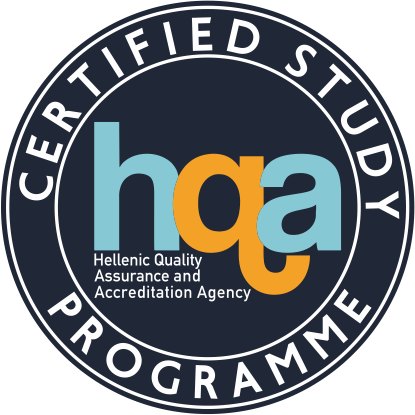| School |
Natural Sciences |
Academic Unit
|
Geology Department |
Level of Studies
|
Undergraduate |
Course Code
|
Geol_014 |
| Εξάμηνο σπουδών |
2ο |
Course Title
|
Field Work I |
Independent Teaching Activities
|
Fieldwork – Field trips |
Weekly Teaching Hours
|
4 +1 + 1 days |
| Credits |
3 |
Course Type
|
General knowledge, Skills development |
Prerequisite Courses
|
Planet Earth, Geomorphology, Palaeontology |
Language of Instruction & Examinations
|
Greek. Teaching |
Is the Course offered to Erasmus Students
|
No |
| Course Web-Page (URL) |
https://eclass.upatras.gr/field-trips/Geol_014 |
Learning Outcomes
|
For course Field work I the following fieldwork days will be required: four (4) days for the course “Planet Earth”, one (1) day for the course “Geomorphology” and one (1) day for the course “Paleontology”.
The four daily field trips take place at:
- Kalavrita, Aroanios River springs, Kastria caves (within the courses Planet Earth and Geomorphology)
- Corinth channel, Sousaki volcano (within the courses Planet Earth and Paleontology)
- Charadros River – Ortos hill (within the courses Planet Earth and Paleontology)
- Outcrops at Proastio area in Patras (within the course Planet Earth)
The purpose of the above mentioned field-trips is to help the student to understand the topics of the studied courses, such as:
- To understand the dynamics of surface earth processes
- Introduction to the main minerals and sedimentary rocks
- The water cycle, groundwater, surface water, streams and drainage systems
- Glacial and periglacial geomorphology, Karstic geomorphology, fluvial geomorphology and morhotectonics
- Volcanicity: Types of volcanic activity, Magma, Volcanoes and Igneous rocks. Types of volcanic vents, the example of Sousaki.
- Main tectonic structures such as faults, and the respective extensional regimes that affect sedimentary basins. The example of the isthmus of Corinth
- Earthquakes and their effect on humans
- To distinguish and to identify fossils in the rocks
- To understand that fossils consist clasts of the sedimentary rocks
- To learn how to extract them from the sediments and collect them properly
- To familiarize with some of the most important and common groups of organisms we encounter as fossils
- To be able to associate organisms with specific living environments which can define the respective depositional environments
|
General Competences
|
- Search for, analysis and synthesis of data and information, with the use of the necessary geological tools (maps, bibliography, reports etc.)
- Introduce the students to the main topics of Geology
|
| Syllabus |
- Kalavryta, Springs of Aroanios River, Cave of Kastria: Understanding the mechanisms of erosion, weathering and transport, gravitational movements and landslides. The surface water at the springs of Aroanios river, and the groundwater in the caves of Kastria, water. Glaciers and kartification phenomena
- Corinth, Sousaki: Tectonism with the presence of extensional faults and how these affect the sedimentary basins of the Isthmus of Corinth, Marine fossils. Types of volcanic activity, produced products, texture and rock structure, Volcanic vents and their types, the example of Sousaki
- Haradros River - Ortos: Sediments and sedimentary rocks, the bedding, the uncomformities, the different lithologies, the plant and animal fossils, the geological outcrops
- Brick factory at Proastio, Patras: Lacustrine and lagoonal environments, coal horizons, fossils, uncomformities
|
| Delivery |
Six daily field-trips for three prerequisite courses aiming to the better understanding of teaching elements provided during lectures and practicals |
Use of Information & Communication Technology
|
Support of Learning Process and Dissemination of educational material through the University of Patras e-class platform from where the respective guidebook for the field-trips can be downloaded. |
Teaching Methods
|
| Activity |
Semester workload |
| Lectures for field-trip preparation |
6*2=12 |
| Field-trips |
6*8=48 |
| Writing of the reports |
6*5=30 |
| Total number of hours for the Course |
90 |
|
Student Performance Evaluation
|
Students must write for each filed-trip a report in order to prove that they understood in each field trip the demonstrated geological features.
Marking Scale: 0-10.
Minimum Passing Mark: 5. |
Attached Bibliography
|
Suggested bibliography mainly in Greek:
- Σημειώσεις Μαθήματος Θεωρίας και Εργαστηρίου που παρέχονται σε pdf μέσω e-class.
- Γεωλογία Αρχές και Εφαρμογές, Θ. Δούτσος 421 σελ, Παρέχεται μέσω ΕΥΔΟΞΟΣ
- Γεωλογία Η επιστήμη της Γης, Παπανικολάου και Σιδέρης 291 σελ Παρέχεται μέσω ΕΥΔΟΞΟΣ
- Διερευνώντας τη Γη, Δερμιτζάκης και Λέκκας 593 σελ.
- Physical Geology, Skimmer- Porter, John Wiley & Sons 1987
- Earth Surface Processes Landforms and Sediment Deposits, Bridge and Demicco, Cambridge Univ. Press 2008
- Γεωργιάδου-Δικαιούλια, Ε., Συμεωνίδης, Ν.Κ., Θεοδώρου, Γ.Ε., 2003, Παλαιοντολογία, ΜΕΡΟΣ Α. Εκδόσεις - Γραφικές Τέχνες ΓΚΕΛΜΠΕΣΗΣ ΑΝΤ. ΓΕΩΡΓΙΟΣ
- 8.Γεωργιάδου-Δικαιούλια, Ε., Συμεωνίδης, Ν.Κ., Θεοδώρου, Γ.Ε., 2003, Παλαιοντολογία, ΜΕΡΟΣ Β. Εκδόσεις - Γραφικές Τέχνες ΓΚΕΛΜΠΕΣΗΣ ΑΝΤ. ΓΕΩΡΓΙΟΣ
- 9.Γεωργιάδου-Δικαιούλια, Ε., Συμεωνίδης, Ν.Κ., Θεοδώρου, Γ.Ε.. 2003, Παλαιοντολογία, ΜΕΡΟΣ Γ. Εκδόσεις - Γραφικές Τέχνες ΓΚΕΛΜΠΕΣΗΣ ΑΝΤ. ΓΕΩΡΓΙΟΣ
- 10.Prothero, R.D., 1998, Bringing fossils to life: An introduction to palaeobiology, WCB/McGraw-Hill
- 11.Clarkson, E., 1998, Invertebrate Palaeontology and evolution, Wiley-Blackwell
|





